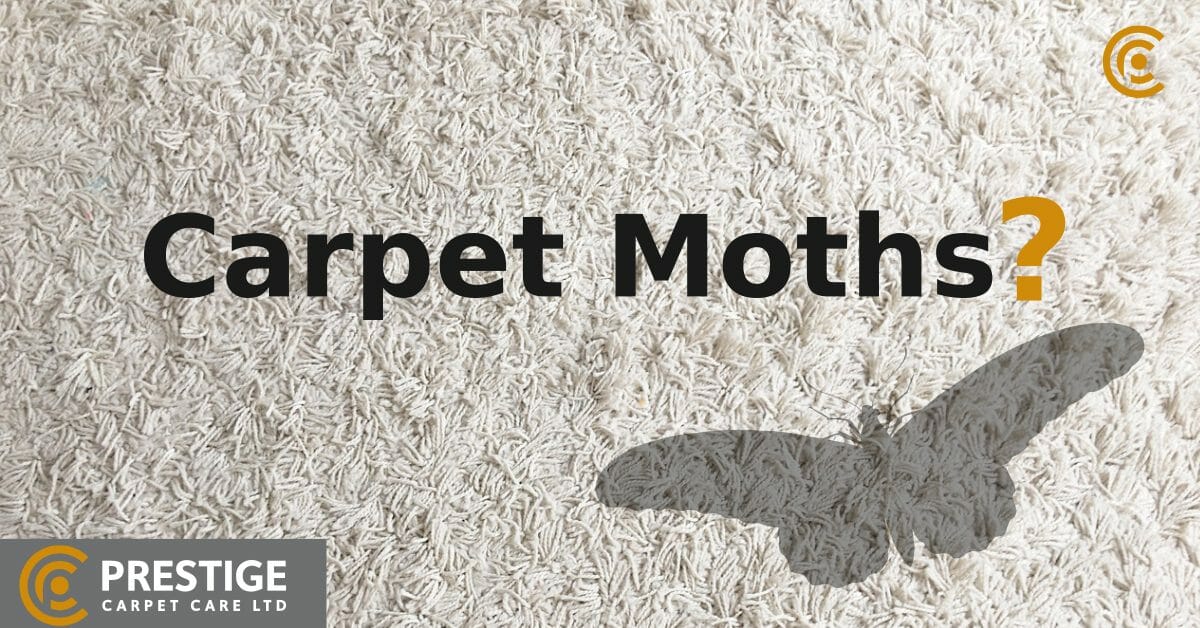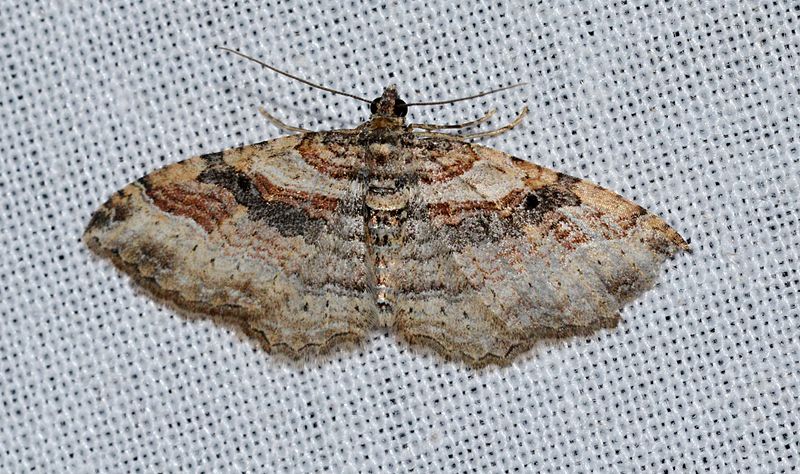
Carpet moths are a much more common household pest than you realise. They can be a great nuisance, and cause a lot of damage. Identifying possible infestations can help you deal with them before they spread.
The Tapestry Carpet Moth (Trichophaga Tapetzella)
Your carpet is one of the worst places to happen to find moth-infested. The Trichophaga Tapetzella makes its home in fur, carpet and clothing. In addition to giving your home an unsightly look, they present some concerns. Carpet moths are most often found during the summer months. As they prefer warmer climates, even insulated homes can become breeding grounds.
Living off of keratin found in carpets, they can be seen hopping about. The months of May through August are most susceptible for an infestation. They may even be hard to spot, as the larvae are often found in the same colour as your carpet. Larvae consume the dyed fibre of the carpet, hence assuming its colour. These moths are quite easy to spot and can be found all over the UK.
Preferring dark corners, their eggs can be found under furniture and behind curtains. Adult moths are usually much less trouble, as they do not feed at all. As larvae, they feed off of the keratin in carpet fibres. They are a serious pest problem you don’t want in your home.

Carpet Moth | Wikimedia Commons
The Life Cycle of a Carpet Moth
Within a single year, carpet moths live out many life cycles. Female moths can lay up to 30-200 eggs at a time. These eggs flourish during the hot months of the year. Throughout the life cycle, the larvae are the most destructive stage.
- The eggs are laid in dark, cool areas on carpets. Moths can infest in any place that is high in keratin
- The eggs lie for up to 10 days before they hatch
- They then move into the larva stage. If the eggs hatch in the winter months, they can remain in this stage for up to 2 years.
- A larva’s surroundings influences its life span. The availability of a ready food source will influence its growth. Surrounding heat and humidity also influences its life cycle.
- Pupation can occur within 8 weeks in the summer months.
- Multiple generations of moths can hatch within a single summer
- The larvae then feed on the keratin in carpet fibres, causing destruction
- Adult moths live only long enough to lay eggs. They do not feed, and die soon after laying their eggs.
Adult male moths die soon after mating. Female moths live only long enough to lay eggs. Their life span as adults normally ranges within a week.
What do carpet moths look like
The biggest hint towards the presence of carpet moths are small bare patches in the carpet. These indicate the presence of the larvae, which eat the carpet. Their eggs look like small white orbs lying in a cluster. These are quite small, often only about 0.5 mm. They can be easier to spot when a great number of eggs are laid.
Identifying a Carpet Moth – Top Tips
Carpet moths have some distinctive looks that can be used to identify them. As soon as you do, treating the infestation is the next step.
- The Trichophaga Tapetzella is quite small in size
- The bodies are about 5 mm long
- Their wing span measures around 14-19 mm
- Their wings are often patterned
- The wings are usually two-coloured. These appear as black in the front and white in the back.
- You can also see antennae on their heads
- The underside of their body is covered in feathers
- In the beginning, they look like worms. They form into moths after pupation
- They are usually a light brownish-yellow colour
- The forewings of the moth show three definite dots. The hind swings are smaller and lighter.
- They can most commonly be seen hopping on the floor
The larvae of the carpet moths are most destructive and hard to spot. As they consume carpet fibres, they take on its colour. This can make it difficult to separate them from their surroundings. Within a period of 8 weeks, larvae can develop into adults. The winter months however can extend the larvae stage.
What causes carpet moths
Carpet moth’s preference for carpets is due to the environment they provide. The carpet offers nourishment in the form of keratin. It also offers an ideal environment, being cool and dry. In the summer months, the surrounding heat makes it an ideal spot for reproducing. The home conditions offer ideal temperatures that foster their growth.
One of the biggest causes of infestation of these moths is neglect. Without regular cleaning, dust and dirt build up in carpets. As they require undisturbed spots to fester, neglected carpets offer the best location. The dark, abandoned fibres of carpets offer nutrition and shelter. Regular cleaning, especially of hard-to-reach spots, can take care of this problem.
The carpet fibres protect the moth eggs from damage or danger. The collected dirt and dust in the fibres offer them all the supplements they need. Food debris, hair and skin particles tend to gather in carpets. Aside from the fibres themselves, these offer a great food source to moth larvae.
The moths themselves are small and hard to notice. However, the damage they cause leaves obvious traces within weeks. Without regular cleaning, you can expect such an infestation to be likely to occur. Once it does, it may require some drastic corrective measures. These must be taken before they become adults and cause more damage.
What Damage Can Carpet Moths Cause?
Infesting your carpets, these moths can virtually destroy the fabric. They largely feed on the fibres, eating away at the larva stage. The damage they cause to the carpet becomes quite obvious in a short period of time. Left untreated, the moths will reproduce and multiply.
Threadbare patches in carpets are a telltale sign of a moth infestation. You should especially check infrequently-used areas for moths. Under furniture, hard-to-reach spots, or unused rooms are their favourite locations. These places guarantee lots of peace and food sources for moths.
Other than damaging your carpet, infestations can get out of hand. From your carpet, they can spread to other keratin-rich sources. Once they’ve made their home in your house, they are unlikely to leave. They can even get into your clothes, and cause untold destruction there.
Moths, however, do not feed solely on synthetic fibres. They tend to go after natural and synthetic mixed fibres. In synthetic fibres, they will go for particles collected in them. These include hairs, food, dead skin and pollen.
What type of carpets are most at risk from carpet moths?
Purely synthetic fibres are not very attractive to carpet moths. As they’re after the keratin, they go for natural materials. Wool carpets are extremely attractive to these moths. That said, they do not require a natural blend. Even a natural and synthetic mix is good enough for them to feed on.
Fur or cashmere throws, silk and leather are all at the greatest risk. If you have such items, it is best to make sure they are regularly cleaned. Your cotton or synthetic fibre carpets are generally safe from infestation. They can become targets if they are not properly maintained.
How to get rid of carpet moths
The first step to getting rid of carpet moths is a thorough cleaning. With a very basic infestation, this should take care of the problem. With more hardcore infestations, further steps maybe necessary.
- Thoroughly vacuum the carpet. Make sure to reach into the edges and under the furniture.
- A generous application of a moth killer powder is then required. Formula P carpet moth powder is effective in dealing with larvae and adult moths. The permethrin dust should be especially applied around the edges and under furniture. Leave the powder in for up to an hour undisturbed before vacuuming.
- For a widespread infestation, a spray is more useful. Formula C+ spray should be sprayed on damaged areas, or even the whole carpet. Try lifting the carpet and spraying under the edges as well. This spray is effective for several weeks after application. Avoid cleaning following its application as long as possible to maintain effectiveness.
- A Formula P power fogger can take care of any remaining moths. Place the can in the middle of the room, and activate. This will release a fog that is deadly to moths. The fog does not leave any residue behind. Keep the room closed off and allow several hours for the fog to take effect. Then open windows and doors to allow it to dissipate. Once the carpet is dry, it is safe to use.
More widespread infestations require repeat treatments. They also require a cleaning regimen to maintain a moth-free space. If you are unsure how to go about treating the infestation, consult a professional. A professional cleaning service can more effectively help you deal with an infestation. You can find out more about how a cleaning service can help deal with carpet moths.
Featured image source


